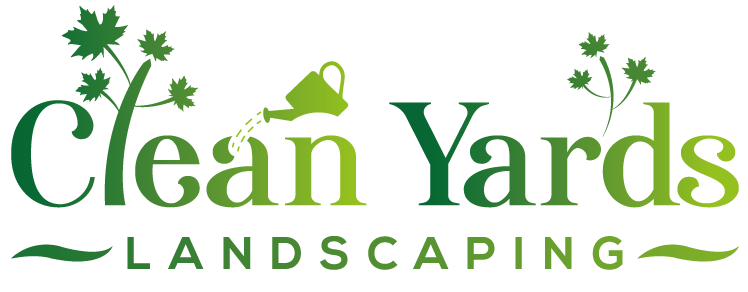Expert Kars Shrub Pruning: Avoid Spring Mistakes Now
Need professional help ensuring your Kars shrubs are pruned perfectly this spring?
Request a Free EstimateQuick Pruning Pointers for Kars Gardens:
- Timing Matters: Prune spring bloomers (Lilac, Forsythia) after they flower. Prune summer bloomers (Potentilla, many Hydrangeas) in early spring before major growth.
- Remove the 3 Ds First: Always start by cutting out Dead, Damaged, and Diseased wood.
- Use Proper Techniques: Make clean cuts just above buds with sharp tools. Avoid leaving stubs.
- Respect Natural Shape: Avoid shearing most shrubs into balls or boxes. Thin selectively.
- Don't Overdo It: Never remove more than about 1/3 of the live growth at once.
Introduction: Hello Kars! Ready to Give Your Shrubs the Right Spring Snip?
Hey there, Kars neighbours! High five – we navigated another classic Ottawa winter! Now that the snow is *finally* making its exit (mostly!), you're probably noticing your yard waking up. Your shrubs, especially, might be looking a bit, shall we say, *enthusiastic* after their long winter nap. Maybe even a little wild?
Spring is the perfect time for some smart landscaping TLC, and that definitely includes giving your shrubs a proper prune. But hang on before you grab those shears and go full Edward Scissorhands! Knowing *when* and *how* to prune different types of shrubs is crucial for their health and beauty, especially with our unique Ottawa Valley climate. One wrong snip at the wrong time, thanks to a surprise late frost or just the plant's growth cycle, can mean fewer flowers or weak growth.
Getting the spring pruning right sets your shrubs up for a fantastic season of healthy leaves, vibrant blooms, and a shape that looks intentionally gorgeous, not like it tangled with a rogue snowplow. We've spent plenty of seasons helping gardens flourish right here in Kars and nearby communities like Osgoode, so we understand the specific timing and techniques needed for plants to thrive in our area. Ready to learn how to give your shrubs the perfect trim for a beautiful spring and summer?
Why Spring Pruning Isn't Just 'Cutting Branches': Understanding the Stakes in Ottawa
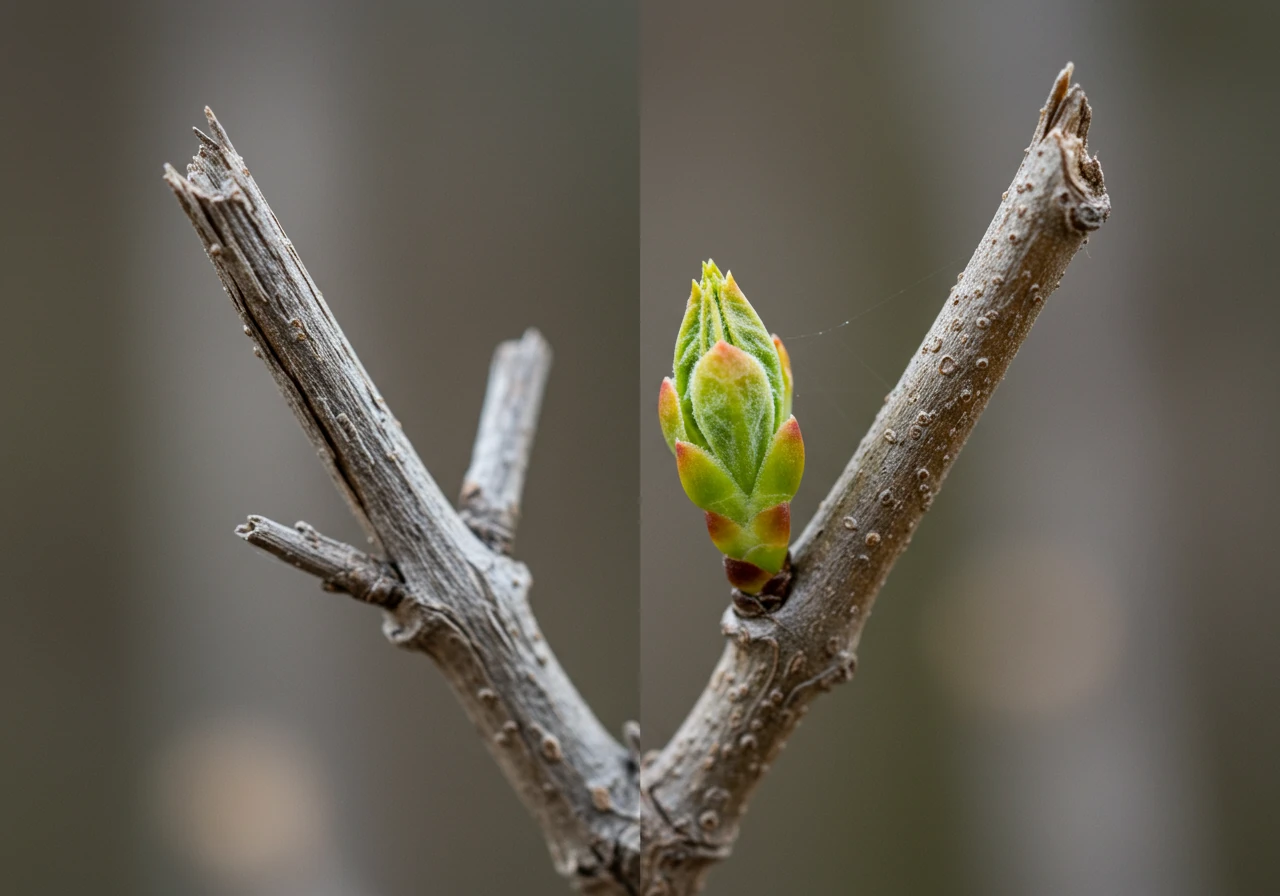
Alright, let's chat about spring pruning. It might seem straightforward – grab some clippers, snip a few twigs, job done, right? Well, not quite! Here in Ottawa, giving your shrubs a spring trim involves a bit more finesse than just giving them a quick haircut. Think of it less like a speedy buzz cut and more like a strategic styling session that sets your plants up for success. Getting it wrong isn't just about aesthetics; it can actually harm your precious plants.
So, why do we prune in the spring, besides stopping the neighbours in Barrhaven from whispering about your unruly hedge?
- Plant Health is Priority #1: This is the big one. Spring pruning is your chance to play plant doctor. You're removing the "three Ds" - dead, diseased, and damaged wood. These bits aren't doing the plant any favours; they can invite pests and diseases. Cutting them out helps the shrub focus its energy on healthy new growth. Plus, thinning out dense branches improves air circulation, which is super important for preventing fungal problems during our sometimes-muggy Ottawa summers. Better airflow = happier shrubs!
- Shape, Structure, and Safety: Pruning helps maintain the desired shape and size of your shrubs. Left unchecked, some shrubs can become leggy, overgrown giants that block windows or paths. Strategic cuts encourage bushier growth and maintain a pleasing form that complements your overall landscape design – maybe even making that backyard spot perfect for relaxing, perhaps near one of those cozy Barrhaven Fire Pit Design & Fall Tips Ottawa. It’s about guiding the plant's growth, similar to how careful planning helps trees thrive, as discussed in these Richmond Tree Planting Tips for Healthy Growth.
- Boosting Blooms and Berries: Timing is everything, especially for flowering shrubs. Prune spring bloomers (like Forsythia or Lilac) after they flower, otherwise you'll snip off this year's buds! Summer bloomers (like Potentilla or many Hydrangeas) generally flower on new wood, so pruning them in early spring before major growth starts encourages more flowers. Cutting at the wrong time means sacrificing that beautiful display.
Ottawa's Unique Challenges: Why Timing is Crucial
Our beloved Ottawa climate throws a few curveballs. We have a relatively short growing season sandwiched between frosty periods. Pruning too early, before the *real* risk of a hard frost has passed (looking at you, late April/early May!), can expose tender new growth stimulated by the cuts to damaging cold. Pruning too late into the spring or summer can stress the plant as it's trying to put energy into leafing out and flowering.
Different parts of the region, from Osgoode to Greely, might experience slightly different microclimates, but the general rule holds: wait until the harshest frost danger is gone, but don't wait too long. Healthy soil also helps plants recover from pruning stress. Ensuring your soil is in good shape, perhaps considering services like Greely Lawn Aeration Best Time & Expert Advice, can make a difference. You can also check resources like the Agriculture Canada Frost Maps for general guidance.
The Downside of Doing it Wrong
What happens if you just wing it?
- Weak Growth: Improper cuts (like leaving stubs or cutting too flush) can invite disease or pests.
- Fewer Flowers: Pruning at the wrong time for your specific shrub type = bye-bye blooms.
- Stressed Plants: Removing too much foliage at once (generally, never more than 1/3rd) can severely stress the plant, making it vulnerable.
- Poor Shape: Random snipping leads to awkward, unbalanced shapes rather than healthy, attractive shrubs.
Your Action Plan:
- Identify Your Shrub: Know what you're pruning before you cut. Is it spring or summer blooming? What's its natural shape?
- Use the Right Tools: Sharp, clean bypass pruners, loppers, or saws make clean cuts that heal faster. Disinfect tools between plants if dealing with disease.
- Know Where to Cut: Generally, cut back to just above a healthy bud or branch junction. Avoid leaving stubs.
- Remove the 3 Ds First: Dead, diseased, damaged wood goes first. Then prune for shape and air circulation.
- Protect the Base: After pruning, ensure the base is clear of debris. Applying a fresh layer of mulch, like detailed in these Metcalfe Mulch Magic Expert Installation Tips, helps retain moisture and protect the roots. You can find quality mulch options through local garden centers or consider our mulching and edging services.
Spring pruning is a vital part of caring for your landscape. It's about understanding your plants and our local Ottawa conditions. If it feels overwhelming, remember that help is available! Whether it's pruning, a full garden makeover, or just getting things tidy with an Osgoode Property Cleanup Service, professionals can ensure it's done right. Check out Our Landscaping Services to see how we can lend a hand!
Oops! The Top 5 Spring Pruning Blunders We See Around Kars (and How to Avoid Them)
Okay, Kars neighbours, let's talk turkey... or rather, let's talk trimming! Spring pruning *seems* easy, but we see a few common slip-ups around town, from Kars proper out towards Metcalfe, that can leave homeowners scratching their heads (and shrubs looking less than thrilled). Don't worry, they're easy to avoid once you know what to look for! Here are the top 5 pruning blunders we encounter:
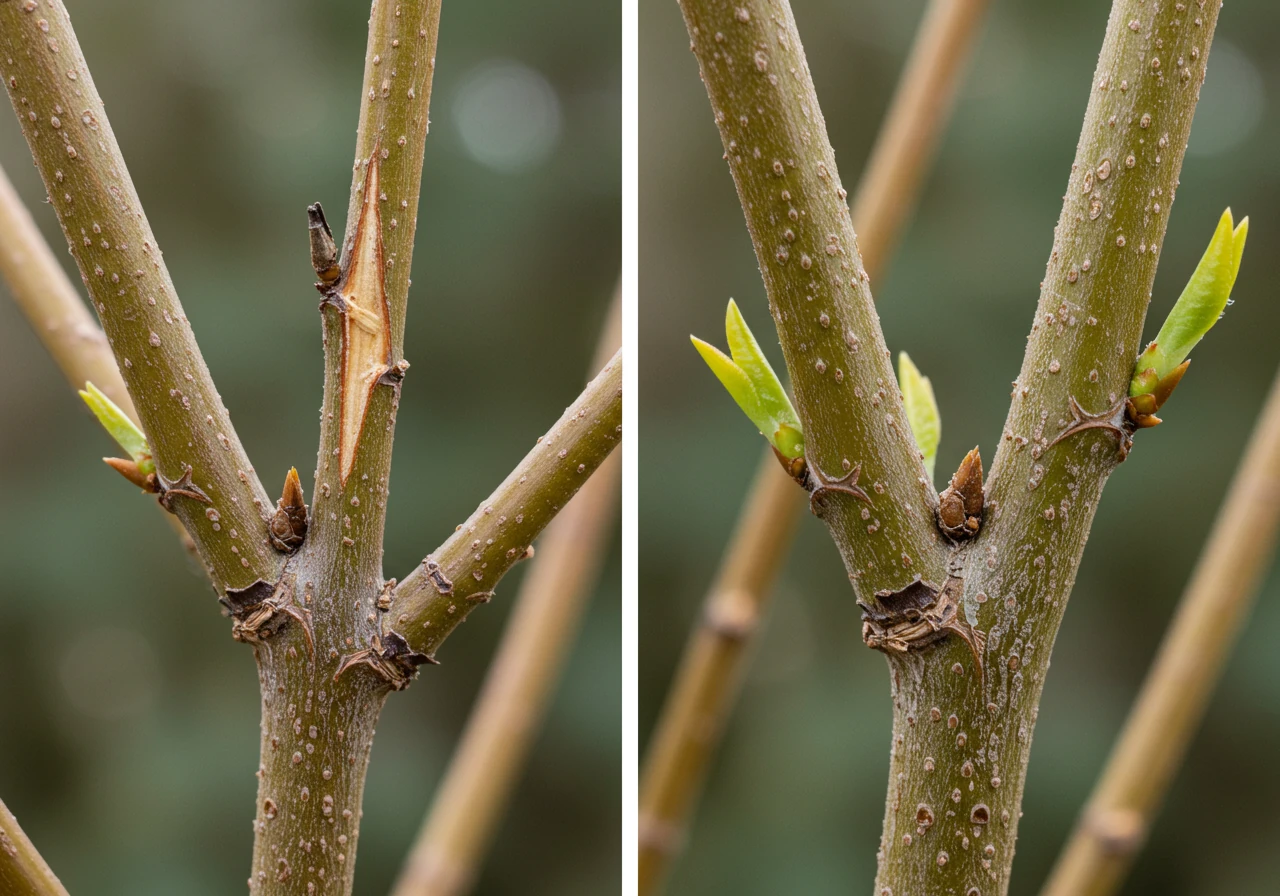
1. The "Whoops, Where Did My Lilac Blooms Go?" Mistake
- The Blunder: Grabbing the pruners in March or April and giving that lovely Lilac bush (or Forsythia, or Weigela) a good haircut before it blooms.
- Why It's Wrong: Oh dear. Shrubs that flower in the spring (typically before mid-June) set their flower buds on last year's growth. Pruning them early means you're cutting off all those beautiful, potential blooms! It's a flower tragedy we see across Ottawa gardens.
- The Fix: Patience, grasshopper! Let spring-blooming shrubs put on their glorious show first. The best time to prune them is right after they finish flowering. This removes spent blooms and shapes the plant without sacrificing next year's floral display.
2. The "Flat-Top Fiasco" (a.k.a Hedge Trimmer Overkill)
- The Blunder: Taking electric hedge trimmers and shearing everything – Spirea, Potentilla, Hydrangeas – into unnatural balls, boxes, or flat-tops, just like a formal hedge.
- Why It's Wrong: Most shrubs aren't meant to be hedges! This creates a thick outer layer of leaves that blocks sunlight and air from reaching the plant's interior, leading to dead zones inside. It also destroys the natural, often graceful, shape of the shrub. Plus, you might be shearing off flower buds depending on the plant and timing.
- The Fix: Use handheld bypass pruners for most shrubs. Follow the plant's natural form. Thin out crossing branches and selectively shorten stems by cutting back to a healthy bud or intersecting branch. Save the hedge shears for actual formal hedges. Give your shrubs some breathing room!
Need help shaping your shrubs correctly?
Get Professional Help With Shrub Pruning3. The "Overzealous Overhaul" (Taking Too Much Off)
- The Blunder: Deciding the shrub is way too big and hacking it back by half or more all at once. Sort of a "go big or go home" approach to pruning.
- Why It's Wrong: Removing more than roughly one-third of a shrub's live growth in a single pruning session can severely shock the plant. It needs those leaves and stems to produce energy! This can lead to weak, frantic regrowth, make it susceptible to pests and disease, or even kill it.
- The Fix: Stick to the one-third rule per year for general maintenance. If a shrub truly needs major size reduction (like an ancient, leggy Spirea), do it gradually over 2-3 years by removing the oldest, thickest stems near the base each spring. If you need a significant change quickly, sometimes a full refresh is better; getting expert advice as part of an Ottawa Property Cleanup Service might be the way to go.
4. The "Stubby & Sickly" Cut
- The Blunder: Either leaving a noticeable stub sticking out past a bud or cutting so close to the main stem that you injure the slightly swollen area where the branch connects (the branch collar).
- Why It's Wrong: Those leftover stubs will die back, creating an entry point for insects and diseases. Cutting into the branch collar damages the plant's natural defense zone, making it hard for the wound to seal properly and heal cleanly.
- The Fix: Make your cuts clean and precise! When cutting back to a bud, prune about 1/4 inch above it, angling the cut slightly away. When removing a whole branch, cut just outside the branch collar – don't leave a stub, but don't cut flush against the main stem either. Always use sharp, clean bypass pruners.
5. The "Ignoring the Obvious" (Skipping the 3 Ds)
- The Blunder: Jumping straight into shaping the shrub without first removing the Dead, Damaged, and Diseased wood (the "3 Ds").
- Why It's Wrong: Leaving this stuff behind is like ignoring a problem hoping it goes away. Deadwood is ugly and can attract unwanted critters. Diseased wood can spread infection throughout the plant or even to neighbours. Damaged branches are weak spots. Removing this unhealthy wood should always be step one – it’s a basic we check for during every City Yard Cleanup Service visit. We see this skipped step often during initial assessments for our Metcalfe Property Cleanup Service too.
- The Fix: Before you think about shape or size, carefully inspect your shrub. Prune out any branches that are clearly dead (dry, brittle, no green inside), broken, or show signs of disease (cankers, unusual spots, oozing). Cut diseased wood back well into healthy tissue, and remember to wipe your pruner blades with rubbing alcohol between cuts, especially if disease is present!
Phew! Avoiding these common Kars pruning pitfalls will help keep your shrubs healthy, happy, and looking great all season long. If sorting out your Spireas from your Hydrangeas (remember, many hydrangeas bloom on *new* wood and *do* like an early spring trim!) sounds confusing, don't sweat it! You can learn more About Us on our website and see how we approach garden care. We're happy to chat about your specific needs (and rest assured, we respect your data - see our Privacy Policy for details). Sometimes, calling in a bit of help, maybe even as part of a broader Osgoode Property Cleanup Service if you're nearby, is the easiest way to ensure pruning perfection! Happy snipping! Find us also on Google!
Know Your Kars Companions: A Guide to Pruning Different Ottawa Shrubs
Okay, Kars crew, let's get down to the nitty-gritty! Not all shrubs appreciate the same kind of haircut at the same time. Think of it like this: you wouldn't give a Poodle the same trim as a Golden Retriever, right? Same idea applies in your garden, whether you're tending beds in Manotick or watching things grow near Winchester. Knowing your shrub's preferences is key to keeping it happy and looking sharp.

1. Spring Bloomers: The Early Show-Offs
- Who they are: Lilacs, Forsythia, Weigela, Mock Orange (bloom before mid-June).
- The Pruning Plan: Prune immediately after flowering ends. They bloom on last year's growth (old wood).
- How to do it: Remove about 1/3 of the oldest, thickest stems at the base each year on mature shrubs. Remove spent flowers. Lightly shape. Always remove dead/damaged wood first. Cleaning up cuttings is part of any good general property clean up.
2. Summer Bloomers: The Warm Weather Wonders
- Who they are: Most Hydrangeas ('Annabelle', Panicle types), Potentilla, Spirea ('Goldflame', 'Anthony Waterer'), Rose of Sharon. (Bloom later on current year's growth - new wood).
- The Pruning Plan: Prune in late winter/early spring *before* major growth starts to encourage new flowering stems.
- How to do it:
- Hydrangeas (Smooth & Panicle): Cut back fairly hard (e.g., to 12-18 inches) in early spring. *Do not* prune Oakleaf or Bigleaf hydrangeas this way.
- Spirea & Potentilla: Cut stems back by 1/3 to 1/2 in early spring. Remove oldest stems at the base on old plants.
- Healthy recovery depends on good roots; ensure proper soil preparation and care.
3. Evergreens: The Year-Round Stalwarts
- Who they are: Cedars (Arborvitae), Junipers, Yews, Boxwoods.
- The Pruning Plan: Minimal pruning needed. Best time for light shaping is late spring *after* new growth, or late summer/early fall before frost. Avoid heavy pruning, especially late.
- How to do it:
- Cedars: Lightly shear green tips only. *Never* cut into brown, old wood. Overgrown cedars might need professional help, perhaps during an Ottawa Property Cleanup Service.
- Junipers & Yews: Tolerate slightly harder pruning but cut back selectively to a side branch within green foliage.
- Decisions on major pruning vs. replacement involve careful planning and choosing the right plants and materials.
Bonus Tip: Red Osier Dogwood
These are often grown for their colourful winter stems. To keep the colour vibrant (it's best on younger stems), prune out about one-third of the oldest, thickest stems right down to the ground in early spring.
Dealing with pruning debris and general garden tidiness afterwards is just as important. A thorough Ottawa Garden Clean Up Service can handle the mess, leaving your beds looking pristine. And if you're out towards the eastern villages, timing and needs might differ slightly – residents needing assistance can look into options like a Marionville Property Cleanup Service.
Quick Pruning Guide Table
| Shrub Type Example | Blooms On | Best Time to Prune (Ottawa) | General Method |
|---|---|---|---|
| Lilac, Forsythia | Old Wood | Late Spring/Early Summer (After flowering) | Remove oldest stems, spent blooms, light shape |
| Potentilla, Summer Spirea | New Wood | Early Spring (Before major growth) | Cut back stems by 1/3-1/2, remove oldest stems |
| 'Annabelle' Hydrangea | New Wood | Early Spring | Cut back stems significantly (e.g., 12-18") |
| Cedar (Arborvitae) | N/A (Evergreen) | Late Spring (After new growth) | Lightly shear green tips only, avoid old wood |
Your Spring Pruning Toolkit & Step-by-Step Success
Okay, let's roll up our sleeves and get ready to prune! Having the right tools and a clear plan makes all the difference between a satisfying snip session and accidentally giving your favourite shrub a questionable haircut. Don't worry, it's easier than you think!
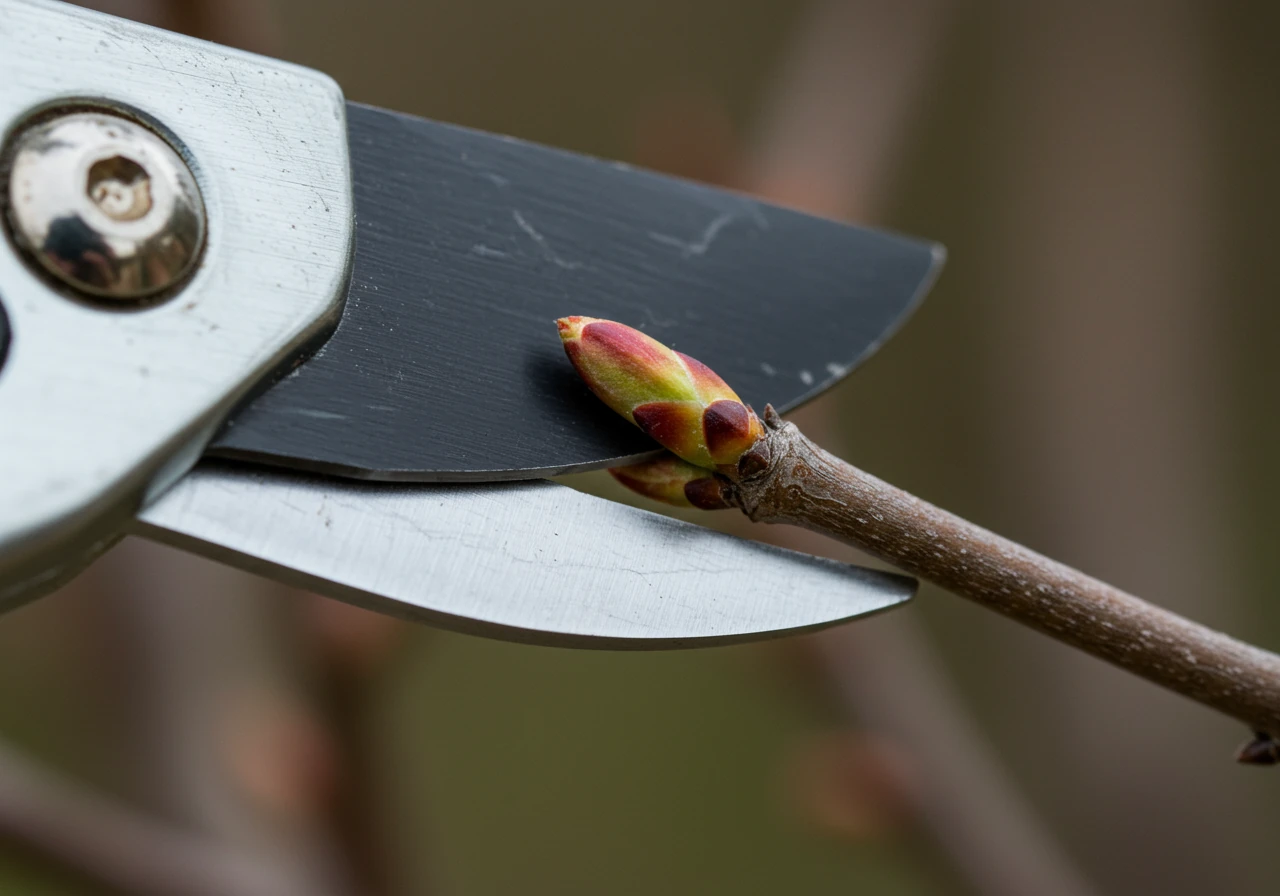
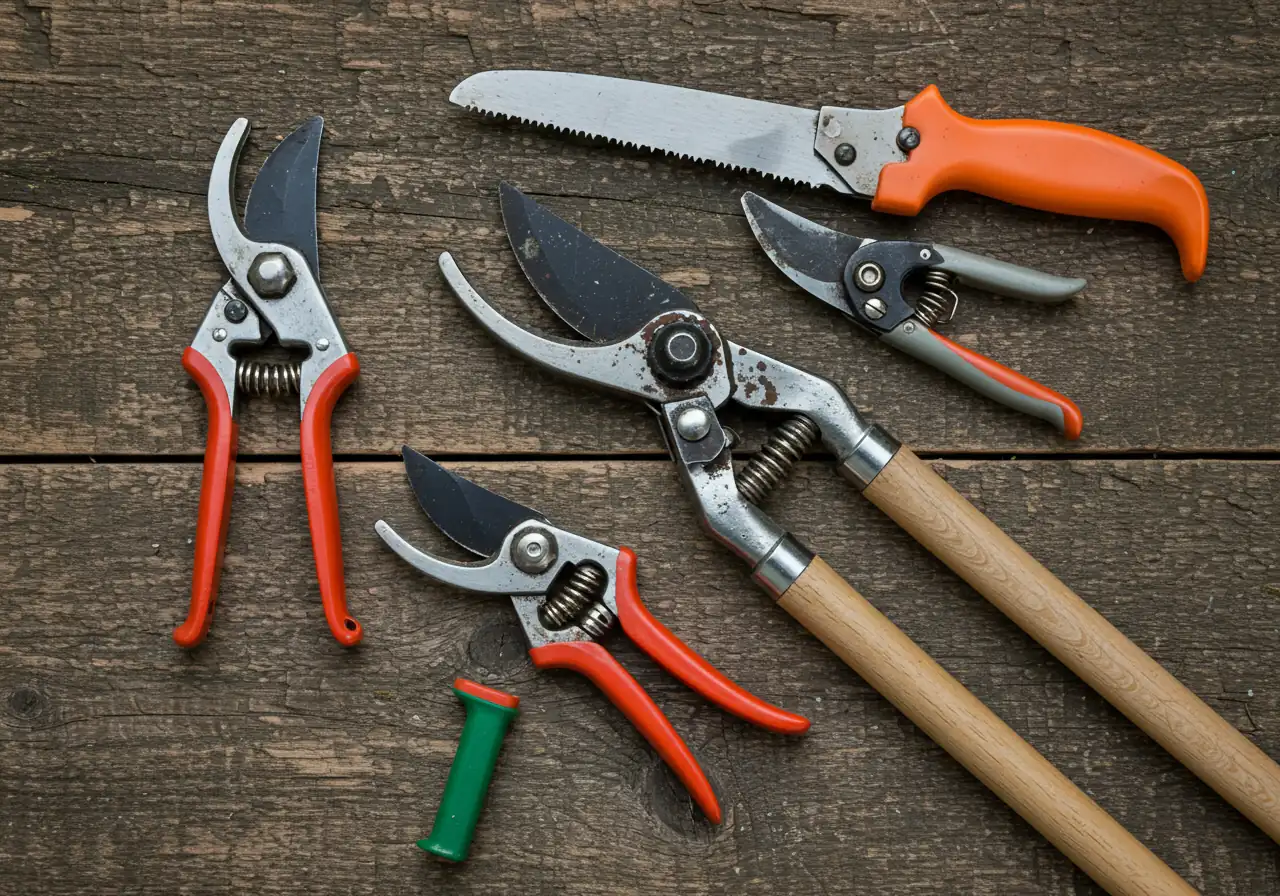
Your Spring Pruning Toolkit: Gearing Up for Glory
You don't need a shed full of complicated gadgets. For most shrub pruning jobs around your Ottawa home, these trusty tools will do the trick:
- Bypass Pruners: Your go-to tool! These work like scissors, with one blade bypassing the other for a clean cut on branches up to about 3/4 inch thick. Crucial: Keep them sharp and clean! Dull blades crush stems, inviting problems.
- Loppers: Like bypass pruners, but with long handles for extra leverage. Perfect for branches between 3/4 inch and 1.5 inches thick.
- Pruning Saw: For branches thicker than what your loppers can handle. Choose one designed for pruning with teeth that cut on the pull stroke.
- Gloves: Protect your hands from thorns and blisters. A sturdy pair is a must.
- Eye Protection: Safety glasses or goggles are non-negotiable. You only get one set of eyes – protect them from flying twigs!
- Disinfectant: Rubbing alcohol or a bleach solution (1 part bleach to 9 parts water) to wipe down blades, especially if cutting diseased wood, prevents spreading problems.
Step-by-Step Success: Let's Get Snipping!
Ready? Take a deep breath, grab your gear, and follow these steps (also outlined in the HowTo schema above):
- Observe & Assess: Before you cut anything, take a good look at your shrub. Walk around it. What's its natural shape? See any obvious dead, damaged, or diseased branches (the infamous "3 Ds")? Decide what you want to achieve – remove deadwood, improve shape, reduce size slightly? This careful assessment is the foundation for achieving those amazing results you see in garden transformations.
- Safety First! Put on your gloves and eye protection. Make sure your tools are clean and sharp. Have your disinfectant handy if you suspect disease.
- Remove the Obvious: Start with the easy stuff – the 3 Ds. Cut dead branches back to the nearest healthy wood or all the way to the base. Remove broken or cracked branches. If you see signs of disease, cut back well into healthy tissue, wiping your blade with disinfectant between cuts.
- Thin it Out: To improve air circulation and light penetration (which helps prevent disease and encourages healthy growth inside the shrub), use thinning cuts. This means removing entire branches right back to their point of origin on a main stem or near the base of the shrub. Focus on branches that are crossing, rubbing against each other, or growing inward towards the centre.
- Shape it Up: Now, if needed, you can shorten stems to improve the overall shape and encourage bushier growth. Use heading cuts by snipping a branch back to just above a healthy, outward-facing bud or side branch. Aim the cut about 1/4 inch above the bud, slanting slightly away from it. Remember the golden rule: generally, don't remove more than one-third of the live growth in one season. Proper pruning like this is a core part of maintaining a healthy landscape, much like the work done during an Ottawa Garden Clean Up Service.
- Clean Up Time! Don't leave pruned branches lying around! Rake them up thoroughly. This tidiness prevents pests and diseases from taking hold and is a key part of comprehensive lawn care. For eco-friendly disposal in Ottawa and surrounding areas like Russell or Embrun, chop smaller branches into pieces suitable for your municipal Green Bin program or add disease-free material to your home compost pile. Larger jobs might create more debris than you can easily handle; if you're near Marionville, for instance, a dedicated Marionville Garden Clean Up Service can take care of the haul-away.
And that’s the basic process! Take your time, make deliberate cuts, and step back occasionally to check your work. Feeling a bit unsure about tackling a tricky shrub, or perhaps you want to share how your own pruning efforts went? We welcome your thoughts and experiences – you can even share them via our estimate-feedback form! If it all feels a bit daunting, don't hesitate to contact-us; we're always happy to help ensure your shrubs get the perfect spring snip. Happy pruning!
HIGHLIGHT BOX: Kars Pruning Pro-Tips Quick Sheet
Hey Kars neighbours, need a super quick reminder before you start snipping? Here are the essentials:
- Timing is Everything: Remember our Ottawa climate! Prune spring bloomers (Lilacs, Forsythia) *after* they flower. Trim summer bloomers (many Hydrangeas, Potentilla) in early spring before big growth starts.
- The 3 Ds First: Always begin by removing any Dead, Damaged, or Diseased wood. This is basic plant health, a step we always cover during any City Garden Clean Up Service.
- Clean Cuts, Sharp Tools: Use clean bypass pruners for cuts just above a bud. Avoid leaving stubs! Proper pruning supports overall yard health, complementing services like sod installation.
- Respect the Shape: Don't shear shrubs meant to be naturally shaped! Thin selectively. Got a bigger mess? A full City Property Cleanup Service might be the answer.
- Don't Go Overboard: Never remove more than 1/3 of live growth at once. Need help managing debris, especially further out like near Marionville? Check our Marionville Yard Cleanup Service. Let us know how your pruning goes via our estimate-feedback form!
Common Pruning Mistakes (Visualized)
A quick look at frequent pruning errors we help homeowners correct:
Ideal Spring Pruning Timeline for Kars
Late March / Early April
Assess winter damage. Remove any clearly dead or broken branches (3 Ds). Hold off on major pruning for most shrubs.
Mid-April to Early May (After Hard Frost Risk)
Prune summer-blooming shrubs (Potentilla, Spirea, Panicle Hydrangeas) before major leaf-out. Prune Red Osier Dogwood. Perform light shaping on evergreens if needed.
Late May / June / July (Depending on Bloom Time)
Prune spring-blooming shrubs (Lilac, Forsythia, Weigela) *immediately* after their flowers fade. Consider local resources like the Friends of the Central Experimental Farm for bloom time info.
Throughout Growing Season
Continue to monitor for and remove any dead, damaged, or diseased wood as soon as you spot it. Maintain overall garden health with services like City Garden Maintenance Service.
Your Kars & Ottawa Shrub Pruning FAQs
Oh, that tricky Ottawa spring weather! Don't panic. If you only did light pruning, your shrubs will likely be okay. Tender new growth stimulated by the cuts is most vulnerable. If possible, you can cover smaller, sensitive shrubs overnight with burlap or an old sheet (remove it when temps rise!). For larger shrubs, focus on ensuring they have adequate water (but not soggy soil) and maybe add a layer of mulch around the base to protect the roots. Avoid further pruning or fertilizing until the weather truly settles. If you see significant damage later, just prune back the affected tips to healthy wood. Keeping the rest of the garden tidy can also help plants recover – think about a spring spruce-up like a Metcalfe Garden Clean Up Service to reduce overall stress.
Snow load damage is a classic Ottawa problem, especially for cedars! First, gently shake off any remaining snow. Then, carefully inspect for broken or cracked branches. Use sharp bypass pruners or a saw to make clean cuts, removing the damaged portion back to the nearest healthy branch junction or just above an outward-facing bud *within the green part*. *Never* cut back into the old, brown, leafless wood on cedars – it won’t regrow from there. Sometimes removing significant damage leaves gaps; you can try gently tying remaining branches together with soft twine to help fill them over time. Dealing with lots of debris? A Metcalf Yard Cleanup Service can help clear away the mess efficiently.
Great question! Clay soil holds moisture well (sometimes too well!) but can also compact easily. Good pruning helps, especially thinning cuts that improve air circulation *above* ground. Below ground, ensure your shrubs aren't sitting in waterlogged soil, which clay is prone to. Avoid heavy foot traffic around the base, especially when wet. After pruning, applying a layer of organic mulch (like wood chips or compost) is extra beneficial on clay. It helps moderate soil temperature, prevent crusting, improve drainage over time, and adds nutrients as it breaks down. Healthy soil is key for recovery, something that's also vital for successful new plantings discussed in our guide to expert garden install services. Learn more about soil types from the Ontario Ministry of Agriculture.
Hey, knowing your limits is smart! It might be time to call for help if: the shrubs are very large or tall (requiring ladders or specialized tools); you suspect disease and aren't sure how to handle it safely; the shrub needs major rejuvenation pruning (which can be tricky); or you simply don't have the time or confidence to tackle it. Professionals have the right equipment, know local plants, and can do the job safely and efficiently. Consider it part of your overall landscaping strategy – sometimes regular help with ongoing garden maintenance saves headaches and keeps everything looking its best. We genuinely appreciate it when homeowners reach out, and we want to say thank you for trusting us with your garden needs. Check our terms and conditions for service details.
Conclusion: Beautiful, Healthy Shrubs for Your Kars Landscape
So there you have it! Getting your spring shrub pruning right is more than just a garden chore – it's the secret handshake to ensuring your landscape looks fantastic and stays healthy all season long here in Kars. By understanding *which* shrubs need *what* kind of trim, and *when* to do it (especially with our unpredictable Ottawa weather!), you can avoid those common pruning pitfalls and encourage vibrant growth and beautiful blooms. No more accidental flower massacres or awkward, lopsided bushes!
Remember, happy shrubs make for a happy yard. From the heart of Kars and out through neighbouring communities like Osgoode, Manotick, Greely, Metcalfe, Vernon, and Kenmore, we've seen firsthand how the right pruning techniques transform a landscape. It’s all about knowing your plants and giving them the TLC they need to thrive.
Feeling ready to tackle those trims, or maybe thinking a little professional help sounds like a good idea? We get it! Let us take the guesswork out of pruning for you.
Ready for picture-perfect shrubs without the hassle?
Request Your Free Estimate Today!Want to learn more about our expert shrub pruning and other services?
Explore Our Landscaping ServicesHere’s to a beautiful, healthy, and stress-free growing season in your Kars garden!
